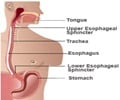Rabeprazole Medication Information
Learn everything you need to know about Rabeprazole-pronunciation, uses, dosage guidelines, indications, and when to take or avoid it.
Get up-to-date information on side effects, precautions, warnings, and proper storage to ensure safe usage.
Explore Rabeprazole brand names commonly used in India and internationally, along with detailed pricing information. Consult your healthcare provider for tailored medical advice.
Generic Name : Rabeprazole Pronunciation : ra-BEP-ra-zole ICD Code : Y53.0 Therapeutic Classification : AntiulcersBrand Names or Trade Names of Rabeprazole
India :
Surgizole DM |
Surgizole (20mg) |
Digerab (20mg) |
Cerabe (20mg) |
Rabset (20mg) |
Razep (20mg) |
Rabon-DSR |
Kurab (20mg) |
Rapan (20mg) |
LORAB-DSR (20mg/30mg)
International :
Aciphex
Why is Rabeprazole Prescribed? (Indications)
This medication is a proton pump inhibitor, prescribed for duodenal ulcer, gastro esophageal reflux disease (GERD), and Zollinger-Ellison (gastric acid hyper secretion) syndrome. It works by decreasing the amount of acid made in the stomach.When should Rabeprazole not be taken? (Contraindications)
Concomitant administration of clarithromycin with pimozide and cisapride is contraindicated.Contraindicated in patients with known hypersensitivity.
What is the dosage of Rabeprazole?
PO- Gastro-oesophageal reflux disease; erosive oesophagitis: 20 mg once daily in the morning for 4-8 weeks. Maintenance: 10-20 mg once daily.For non-erosive oesophagitis: 10 mg once daily for 4 wk, upon symptom resolution, may continue with 10 mg once daily when needed.
Healing of Duodenal Ulcers: 20 mg/day after the morning meal for 4 weeks; additional therapy may be required for some patients.
Zollinger-Ellison: 60 mg once daily. Adjust according to patient’s needs.
How should Rabeprazole be taken?
It comes as a delayed-release (long-acting) tablet to take by mouth. It is usually taken once a day for 4 to 8 weeks, but it is sometimes taken for a longer time, with or without food.What are the warnings and precautions for Rabeprazole?
•Caution should be exercised in patients with history of bleeding ulcer, such as black, tarry stools or vomit that looks like coffee grounds, or if you experience throat pain, chest pain, severe stomach pain, or trouble swallowing contact your doctor immediately.May increase the risk of GI infections due to acid suppressive effects, liver damage, gastric tumor.
What are the side effects of Rabeprazole?
Central Nervous System- Headache, dizziness, disorientation/delirium.Skin- Skin eruptions, severe allergic reactions.
Eye and ENT- Inflammation of pharynx.
Gastrointestinal- Diarrhea, nausea, abdominal pain, vomiting, flatulence, constipation, abdominal pain, dry mouth.
Genitourinary- Kidney disorder.
Liver- Occurrence of confusion, altered level of consciousness and coma as a result of liver failure (hepatic encephalopathy), inflammation of liver, increased liver enzymes, jaundice.
Blood- Decrease in white blood cells, anemia.
Metabolic- Excess ammonia in blood, thyroid stimulating hormone elevations.
Musculoskeletal- Joint pain, muscle pain, rapid breakdown of skeletal muscle.
Respiratory- Inflammation of lung tissue.
Miscellaneous- Pain, infection, rapid swelling of dermis, coma, sudden death.
 MEDINDIA
MEDINDIA
 Email
Email







